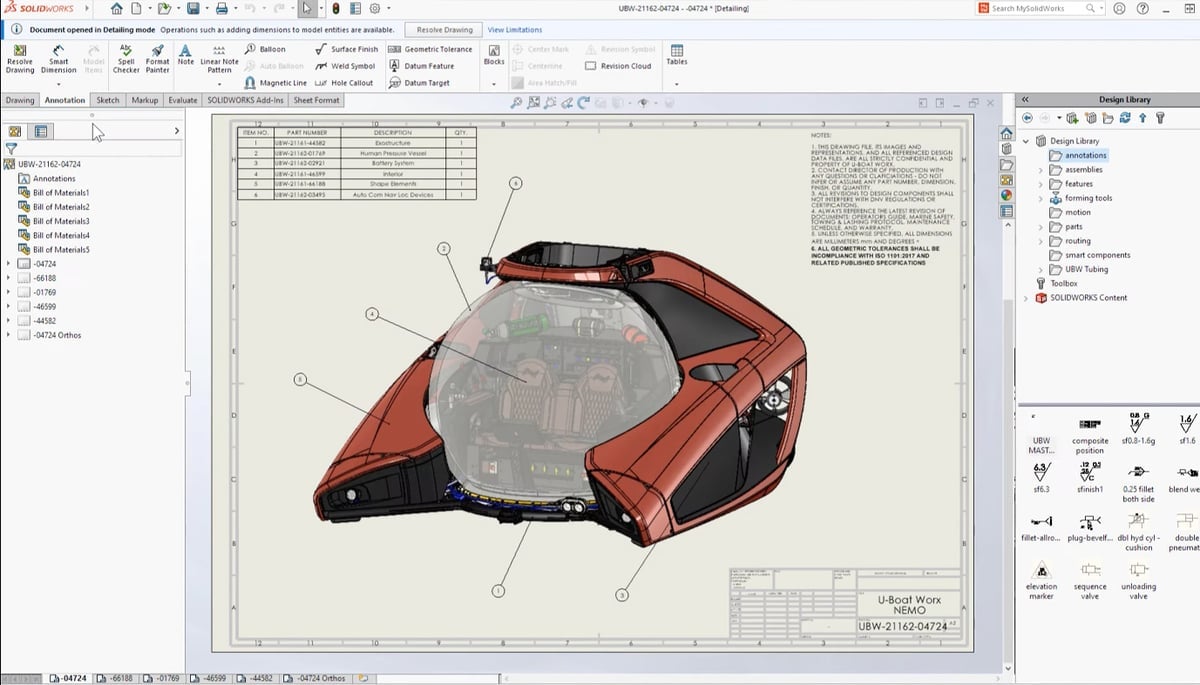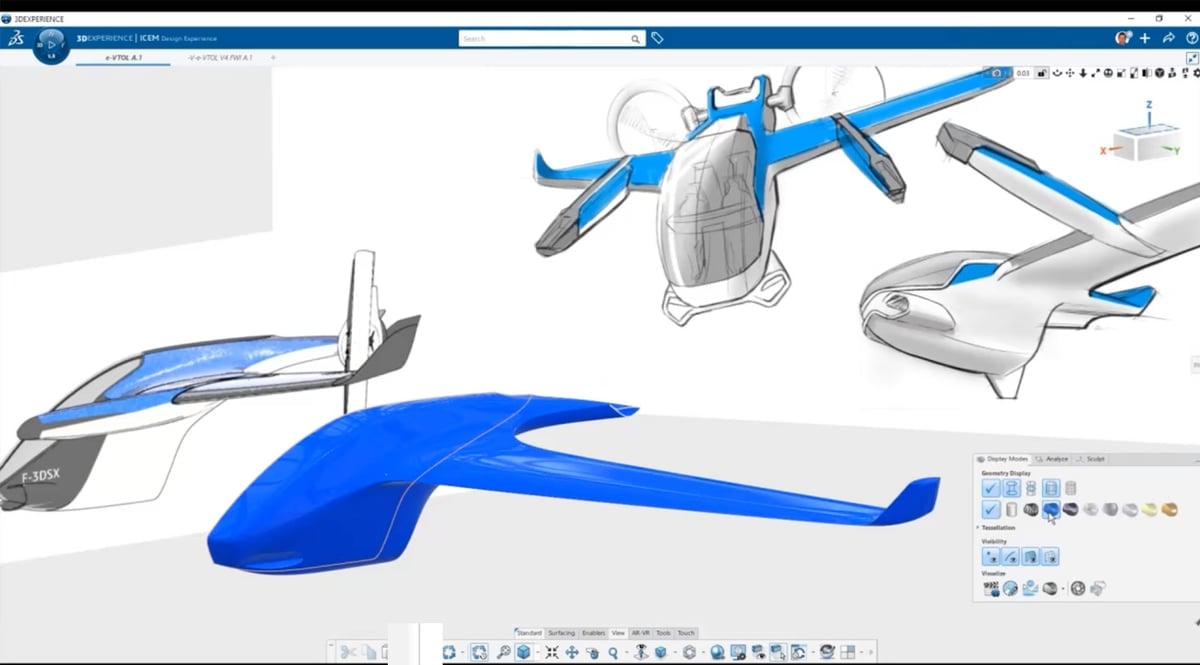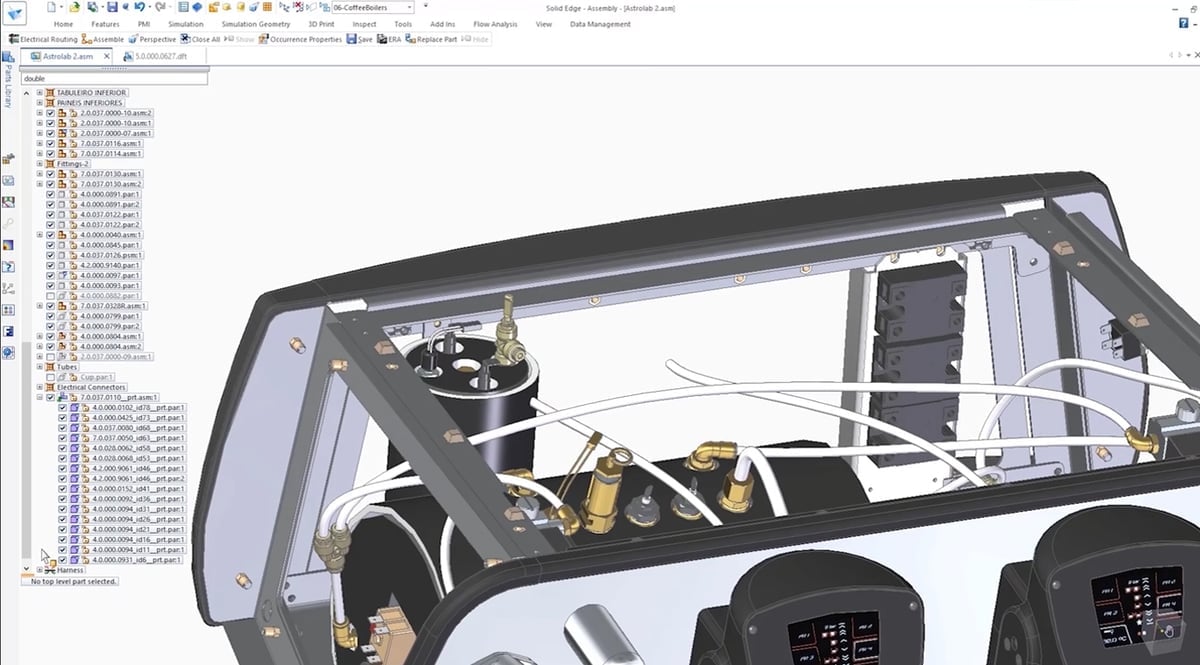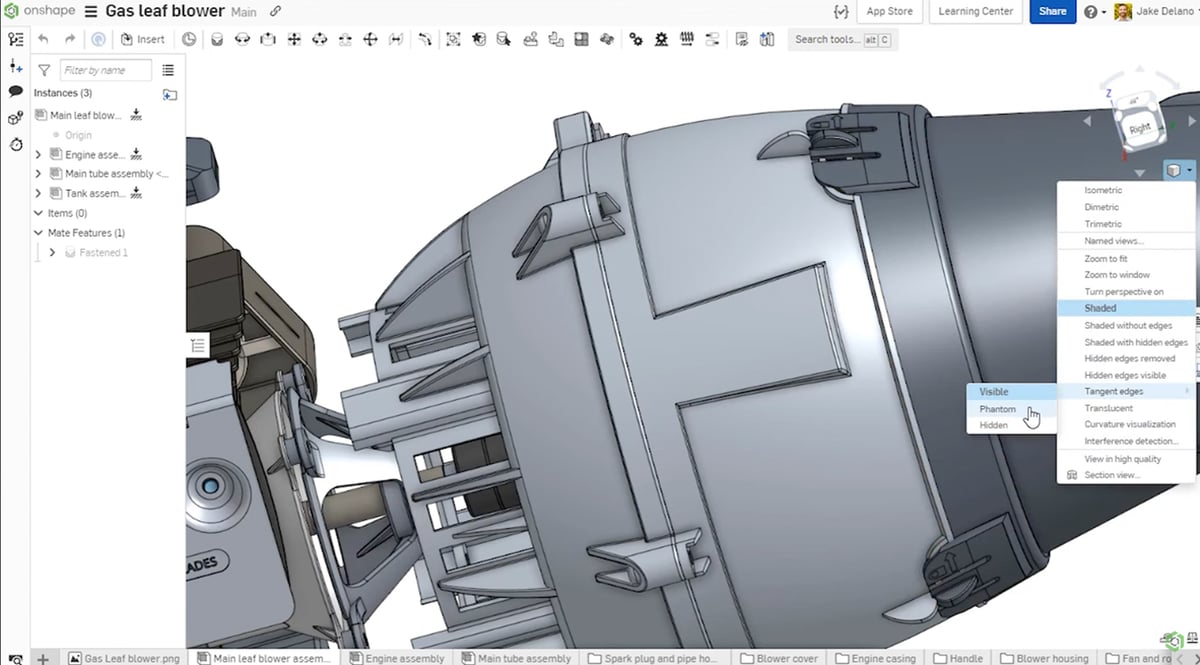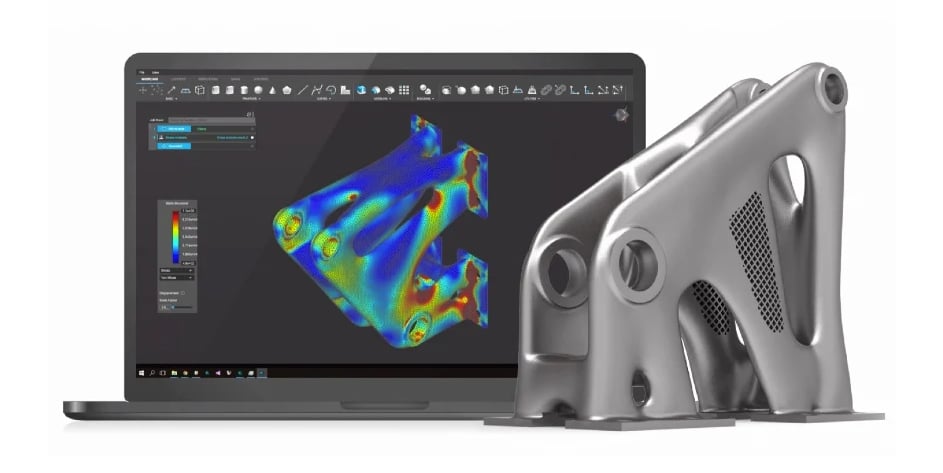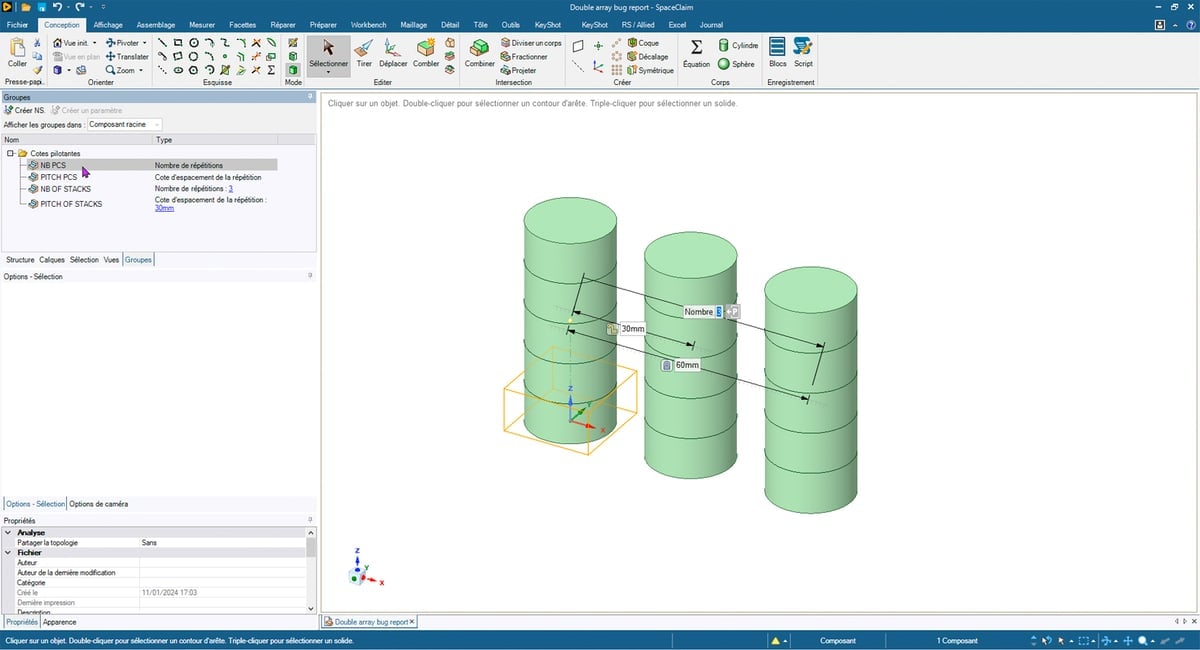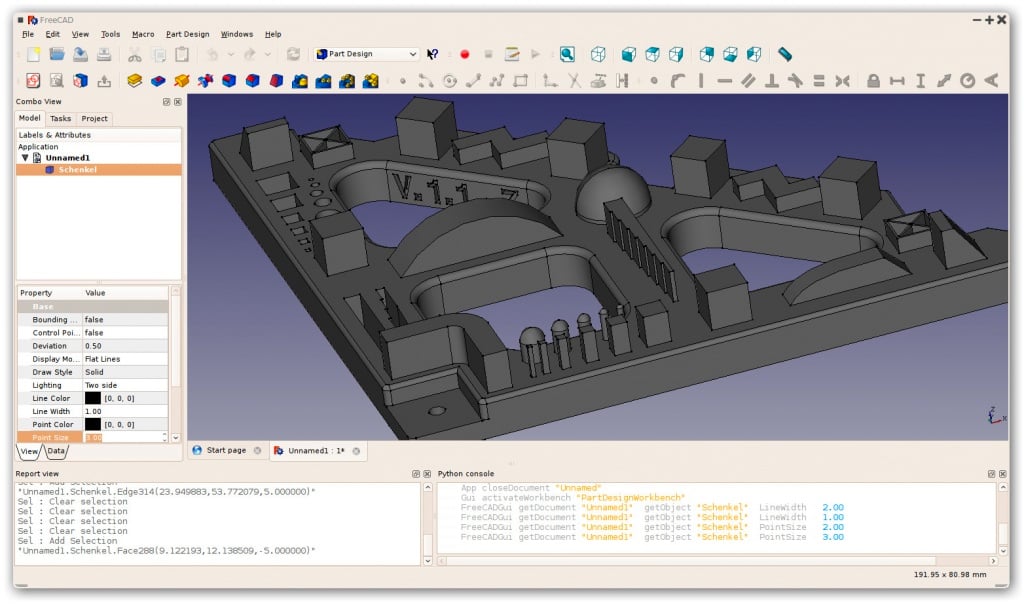Almost everything around you right now, from your car to your shoes to your house (if it’s less than 40-years-old) was designed using computer-aided design (CAD) software. CAD plays a crucial role in manufacturing and building by enabling designers to conceptualize, create, modify, and optimize digital models. These then serve as blueprints for construction and traditional manufacturing processes, or as direct instructions for digital manufacturing processes, like 3D printing, CNC machining, or robotic assembly systems.
Today there is a growing number of CAD software programs with various features and focuses, which makes it no easy task to get to the bottom of which CAD tool is the right one for your application.

Today, you need to consider whether your designs are more mechanical, architectural, or conceptual. Is photorealistic rendering more or less important than stress simulation? Are features like generative design, topology optimization, and easy group collaboration important to you? Then, of course, there’s the software’s ease of use, cost, add-ons, and scalability.
Some CAD software is focused on particular industries, such as architecture, while others aim to be a jack-of-all-trades with deep toolsets and multiple optional extension. Often confused with CAD are software programs for 3D modeling. CAD software may include 3D modeling capabilities, but pure 3D modeling software typically emphasizes artistic and creative aspects of 3D design for animation, visual effects, gaming, and digital art.
With the of array choices for digital design in mind, we’ve compiled a list of the most popular and best CAD tools on the market today, along with some industry-specific alternatives, detailing features, strengths, typical uses, and of course, price.
If you’re new to CAD or looking to get your feet wet with basic programs, check out our articles Top 10: The Best Free CAD Software in 2024 or CAD for Kids: The Best 3D Modeling Software for Children.
| Software | Supported by | Market Price | Best for | Top Features |
|---|---|---|---|---|
| AutoCAD 2024 | Windows, MacOS, iOS, Android | $2,030/year | Architecture, Engineering, Product Design, Construction, Real Estate Development | 2D & 3D drafting, design, and modeling with solids, surfaces, mesh objects, documentation features, collaboration, electrical design, plant design, mechanical design, 3D mapping |
| SolidWorks 2024 | Windows | $3,995 one-time fee + $1,295/year | Mechanical Engineering, Product Design, Automotive Design, Manufacturing, Heavy Industry | Parametric modeling, assembly modeling, 2D drawing, simulation, rendering & visualization, sheet metal design, electrical design, CAM integration, 3D printing prep |
| CATIA | Windows | $12,000 one-time fee + $2,000/year | Aerospace & Automotive Engineering, Mechanical Engineering, Heavy Industry, Defense Industry, Consumer Goods | Parametric Modeling, Assembly Modeling, Design, Drafting, Surfacing, Collaboration, CAM, CAE, Simulation |
| Inventor 2024 | Windows, MacOS, iOS, Android | $2,500/year | Mechanical Engineering, Product Design, Manufacturing, Construction | Parametric Modeling, Assembly Modeling, Design, Drawing, BIM Interoperability, Design Automation, Collaboration, Simulation |
| Siemens NX | Windows, MacOS, Linux | $4,889/year | Aerospace & Automotive Engineering, Mechanical Engineering, Heavy Industry, Defense Industry, Consumer Goods | Parametric Modeling, Assembly Modeling, Design, Drawing, Rendering, BIM Interoperability, Design Automation, Collaboration, Simulation, PLM integration, CAM, CAE, FEA |
| Solid Edge 2024 | Windows | $3,700/year | Mechanical Engineering, Manufacturing, Construction, Electrical & Fluid Engineering, Product Design | Parametric Modeling, Assembly Modeling, Drafting & Documentation, Sheet Metal Design, Simulation & Analysis, CAM, Rendering & Visualization, Cloud Collaboration |
| Creo 10 | Windows | $2,780/year | Mechanical Engineering, Heavy Industry, Defense Industry, Consumer Goods, Manufacturing, Electrical & Fluid Engineering | Augmented reality, FEA, Computational Fluid Dynamics (CFD), simulation integration, 2D/3D design, parametric and freeform surfacing, MBD, mechanism design, ergonomic design, and assembly management , performance analysis |
| Fusion 360 | Windows, MacOS | $545/year | Product Design, Consumer Goods, Modeling, Construction, Mechanical Engineering, CAM, CAE, Cloud Collaboration | Parametric Modeling, Assembly Modeling, Design, CAM, CAE, Simulation, Generative Design, Design Automation, Rendering |
| Onshape | Any web browser | $1,500/year | Product Design, Consumer Goods, Modeling, | Mechanical Engineering, Parametric Modeling, Simulation, Virtual Reality, PLM, Assembly Modeling, Cloud Collaboration |
| Rhinoceros 3D | Windows, MacOS | $995 / perpetual license | Product Design, Consumer Goods, Modeling, Rendering | NURBS Modeling, Parametric Modeling, Rendering and Visualization, Mesh Repair, 3D Printing Prep |
| nTop 4 | Windows | not disclosed, but on par with ANSYS, Creo, and CATIA | Design for Additive Manufacturing | Generative Design, Topology Optimization, Lattice Generation, Simulation |
| SpaceClaim | Windows | Not available | Product Design, Concept Modeling, Reverse Engineering | Direct Modeling, 3D Printing Build Prep, Model Simulation, Concept Modeling |
| FreeCAD | Windows, MacOS X, Linux | Free | Mechanical Engineering, Product Design, Manufacturing | Parametric Modeling, Assembly Modeling, Drafting & Documentation, Sheet Metal Design, Simulation & Analysis, CAM, |
What to Look For

There are dozens of great professional-grade CAD products on the market. Each one offers a somewhat different toolset and user experience while sharing many core features. It’s knowing these differences, such as industry-specific features or team collaboration capacity, that’s key to making the right decision.
With this in mind, here are a few questions to ask yourself about your intended use to better narrow down your choices:
- Is there an established CAD tool in my industry?
- Which type of digital modeling do I prefer/need: parametric, direct, freeform, NURBS (Non-Uniform Rational B-Splines)?
- Do I need to share files and collaborate with others?
- Do I need photo-realistic renderings for client presentations?
AutoCAD 2024

AutoCAD is likely the best-known CAD program of all time. It’s considered by many as the grandfather of CAD software, especially for architecture, with the desktop application first available in 1982, and ever since it has been on the cutting edge of CAD. It’s widely used for creating 2D and 3D drawings, models, and technical documentation across various industries such as architecture, engineering, and construction. It offers powerful drafting and modeling tools, precise dimensioning, and extensive customization options to streamline design workflows and facilitate collaboration. Among CAD programs, it’s one of the best at stunning renderings.
With the 2024, Autodesk is touting even more AI and machine learning in AutoCAD to help improve workflows based on how users interact with the CAD software. There’s a new industry-specific toolset for MEP (mechanical, electrical, and plumbing) with a library of 10,500+ MEP objects you can add to your designs.
AutoCAD also comes with AutoCAD Web, which is a cloud-based and limited version of AutoCAD for use on the go. It is an extremely lightweight version of the software which lets you do light editing and draft fundamental 2D designs.
AutoCAD does not have native parametric modeling capabilities like Autodesk’s other CAD programs Inventor and Fusion 360.
The annual subscription is $2,030, but students and educators have unlimited free access for up to a year. Note that the feature set for the Windows and MacOS versions differ somewhat.

SolidWorks 2024
SolidWorks is a solid modeling and CAD program used in mechanical engineering, product design, and manufacturing industries. It offers intuitive tools for creating, simulating, and documenting 3D models of mechanical components and assemblies.
It was originally created by an MIT graduate in the early ’90s and is now developed and published by the French company Dassault Systemes (3DS). SolidWorks was designed with a broad range of industries in mind, including shipbuilding, industrial equipment, architecture, and even the medical and energy sectors. As you might expect, then, it does require extensive training to make the most of its potential, and knowledge in engineering will surely help.
Yet, it’s undoubtedly one of the most popular 3D modeling programs available. SolidWorks facilitates parametric modeling, assembly management, finite element analysis (FEA), and rendering, enabling designers and engineers to streamline product development processes.
Included in the new updates for 2024 is previous release compatibility and the ability to apply rules when you de-feature models using the Silhouette option. You also now have the ability to filter out unwanted components on the fly when importing assembly STEP files.
A SolidWorks license $1,295/year for the Basic version, $1,500/year for Professional, $2,000/year for Premium, and very discounted versions for students and active military and veterans (US & Canada). For more information on SolidWorks for free, check out our article SolidWorks 2024: Free Download of the Full Version.
Interestingly enough, one can’t simply purchase a license directly from 3DS, as they only work through resellers, which usually also provide training and support. In fact, this has become standard practice within the CAD industry, and for this reason, prices may change depending on the country and reseller.
3DS also makes the software DraftSight, which is primarily used for 2D drawings and technical documentation, although it has 3D functionality.
CATIA
CATIA, which is an acronym for Computer Aided Three-Dimensional Interactive Application, is a multi-platform tool that wears three hats: firstly as 3D CAD software, then as computer-aided manufacturing (CAM) software, and finally as a computer-aided engineering (CAE) tool.
Like, SolidWorks, this software suite is also developed by Dassault Systemes but differs in its industry focus, complexity, parametric modeling approach, and integration capabilities, catering to different user requirements and use cases.
CATIA is widely used in aerospace, automotive, and manufacturing, where complex and large-scale designs (cars, rockets, machinery) are common. It offers advanced surface modeling, assembly management, and engineering analysis tools tailored for high-end engineering and design requirements. Think of it as SolidWorks on steroids. It has powerful parametric modeling capabilities, allowing users to establish complex relationships between different elements in a design.
CATIA is part of the Dassault Systemes’ PLM (Product Lifecycle Management) suite, which includes other software applications for simulation, analysis, and collaborative product development. As a result, CATIA offers seamless integration with other Dassault Systemes’ solutions, enabling comprehensive PLM workflows and collaboration across design, engineering, and manufacturing teams.
Needless to say, it’s the definitive advanced engineering tool and one of the top CAD software options on the market. It’s commercialized just like SolidWorks, through local resellers, and the latest V5 basic license currently retails around $12,000 plus the yearly subscription of $2,000, but can vary widely based on your specific version or configuration of the software. Additional modules cost extra.
Inventor 2024
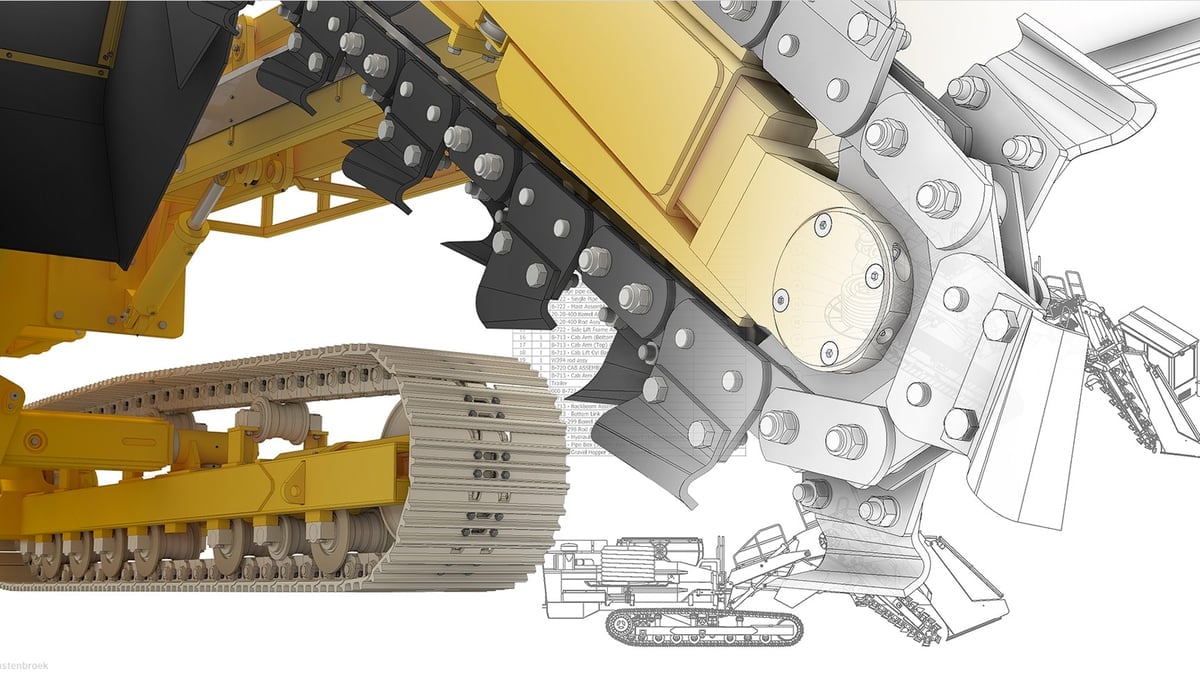
Inventor is another CAD program developed by Autodesk. It provides diverse modeling tools (parametric, direct, and free-form), documentation, and simulation capabilities in an all-in-one package.
It’s considered slightly more user-friendly than its competitors and, for that reason, is commonly used by designers who don’t have an engineering background. But don’t think that Inventor isn’t a powerful tool. On the contrary: It’s primarily for professional applications, including architecture and product design.
Inventor is well established in the industry and has been on the market for more than 20 years, directly competing with other well-known options like SolidWorks. At this point you maybe asking yourself, well, what’s the difference between AutoCAD and Inventor then? In a nutshell, AutoCAD is best suited for 2D drafting, documentation, and basic 3D modeling, while Inventor is specialized for parametric 3D modeling, mechanical design, and engineering analysis.
Inventor is manufacturing-driven, meaning its users are looking to get an experience as close to the real world as possible to know how their objects will perform. It provides a wide range of specialized tools for mechanical design and engineering, such as advanced part modeling tools (e.g., extrusions, revolves, sweeps), assembly design and motion simulation, finite element analysis (FEA), sheet metal design, and automated drawing creation. Inventor also integrates with CAM software for generating toolpaths directly from 3D models.
Like all Autodesk programs, it’s free for students and educators, otherwise it’s $2,5oo a year.

Siemens NX
Developed by the industrial manufacturing giant Siemens, NX stands among the best professional CAD tools available. It offers a wide range of integrated tools and functionalities for CAD, CAE, and CAM used in industries, such as aerospace, automotive, machinery, and consumer products. NX enables users to create complex 3D models, perform simulations and analysis, generate toolpaths for manufacturing processes (3D printing and machining), and manage product data throughout the entire product lifecycle. It’s a top choice for companies like Mercedes Benz and Lockheed Martin.
Siemens offers a buffet of modules individually priced so you can buy only the functions you need. With the range of different sub-products, add-ons, and variations of the NX software, it can be difficult to pinpoint which product of collection is right for your business. Here’s a breakdown of the main variations: NX Core Designer is the module for solid modeling of components, assembly modeling, sheet metal design, freeform modeling, and convergent modeling; NX Advanced Designer is for everything in Core plus routing and surface analysis tools; NX Mold Designer, obviously, for mold part design, tool assembly layout, tool design, and tool validation; NX Scan to Part converts imported scanned 3D data into a fully featured, solid, or surface parts; and NX Drafting & Layout creates engineering drawings of 3D parts and assemblies or 2D design layouts using NX sketch tools.
The new NX Topology Optimizer is really a workflow that automatically creates new parts that can then be tested and validated before they’re 3D printed. Also need in the latest version is Sustainability Impact Analysis, which enables you to look at the environmental impact of you production process by evaluating more than 30 factors. This means that businesses can more easily meet their sustainability commitments and ensure their processes are as environmentally conscious as possible.
The new Appearance Manager is Siemens answer to other CAD programs for feature photorealistic 3D renders of assemblies and parts. Now NX has it, too, although it’s not quite as robust as the competition.
This level of full-feature industrial CAD comes with a steep learning curve and a hefty price tag. If you start with just NX Core Designer, it’s about $5,000 a year. The Full NX for Design with all modules is around $40,000+. Siemens offers a range of 30-day trials for the various software packages, add-ons, and tools within the NX framework. There’s also a free student edition of NX and the academic edition for institutes of higher learning.
Solid Edge 2024
Solid Edge is Siemens‘ other CAD software. This one could be considered a starter version of Siemens NX. Solid Edge is easier to learn and has simpler features, not to mention it costs much less than NX. To put it another way, it’s a trade-off between flexibility and ease of use (plus cost). Still, Solid Edge offers the same integration with PLM solutions and similar CAM and CAE capabilities.
Solid Edge is best known for its synchronous technology, a modeling technique that mixes both parametric and direct modeling, leveraging the simplicity of the latter with the high-level control offered by history-based modeling. It does, however, allow for regular parametric and direct modeling if you prefer.
Solid Edge supports assembly design, simulation and analysis tools, drafting and documentation features, cloud collaboration capabilities. Additionally, it supports additive manufacturing with tools for designing and optimizing parts for 3D printing. Solid Edge can act as build-prep software so you can export files in ready-to-print .stl or 3MF formats.
The software also features generative design, which combines design tools with topology optimization, speeding the creation of lighter components suited for immediate manufacture via 3D printing.
In Solid Edge 2024, Siemens introduced a host of new features, including an AI assembly tool predicts and offers alternatives for when you’re replacing a part in an assembly. This AI-powered user interface “learns your behavior”, Siemens says, to show you relevant commands in the right context, recognize and maintain design intent, and automatically compute geometric solutions from defined constraints.
Siemens offers a very generous and feature-rich Community Edition for free, along with free full versions for teachers and students. Sadly, Solid Edge is for Windows only, and with the new flexible licensing option, you now can pick and pay for the add-ons you need, only when you need them. A 1-year subscription to the Classic platform is around $3,000, while the fuller featured Premium edition is about $4,322 per year.
Creo 10
Creo, from the American company PTC, like many others, is a scalable tool with a range of features and capabilities to help engineers imagine, design, and create their products. It includes modules for additive manufacturing, generative design, IoT (Internet of Things), model-based definition (MBD), and augmented reality (AR). Creo is known for its flexibility and ease of use, allowing for rapid design iterations and changes. It’s popular in the heavy industrial equipment industry, and is in use at companies, such as Cal International, Toyota, John Deere, and GE Healthcare.
Creo is generally less feature rich than the full-suite of CATIA or NX, but it is inching up against rivals Fusion 360, Solidworks, and Solid Edge, especially with its latest trove of updates found in version 10. In a word, Creo 10 is about speed. Core enhancements enable better designs in less time. The latest updates include new composite tools and enhancements for electrification and ergonomics design, MBD, simulation-driven design, and manufacturing. Creo+, available via SaaS, provides cloud-based tools for real-time collaboration and streamlined license management and deployment.
PTC also boosted the power of its simulation and generative design capabilities by incorporating advanced multi-physics from Ansys into the Creo simulation portfolio. The applications already-solid generative design technology sports some new capabilities enabling you to define optimization studies with designed-in safety factors and natural frequency limits.
Creo offers a student edition for a little over $200/year, while the basic version is nearly $3,000/year with a menu of add-ons for an additional charge.
Fusion 360
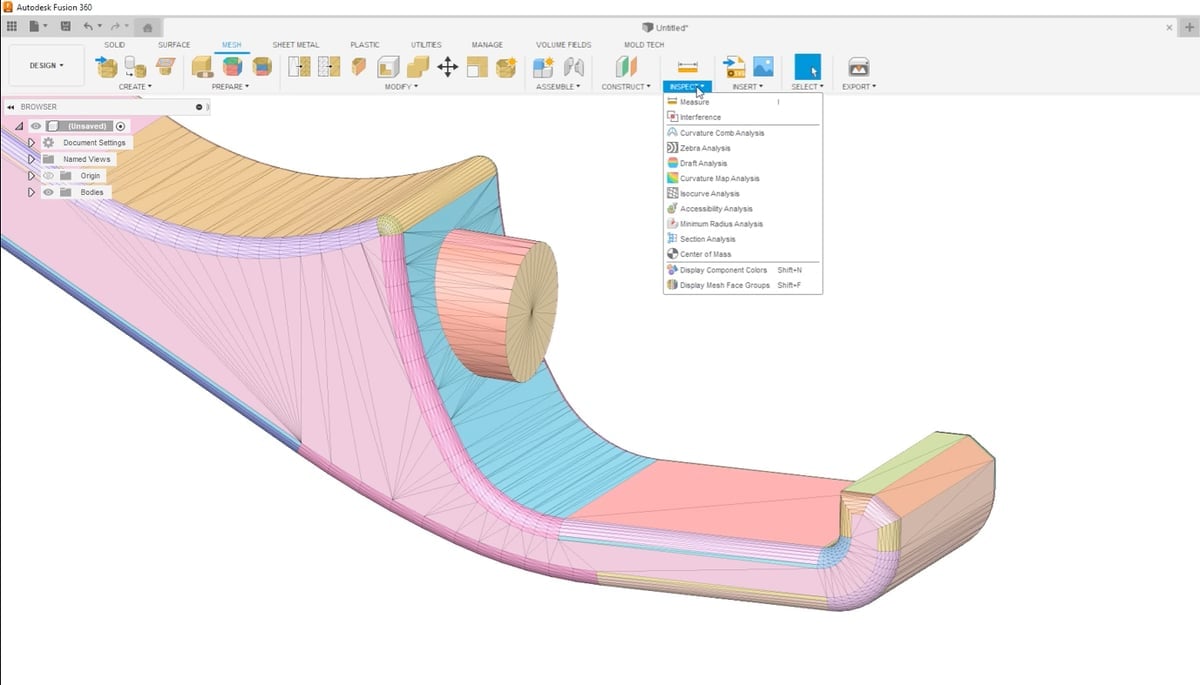
Fusion 360 is another CAD software product from Autodesk, the maker of AutoCAD and Inventor. It offers a comprehensive set of tools for product design, engineering, and manufacturing in a single platform. With its free, limited-feature version for personal use, it has become a favorite for makers and professionals.
Although AutoCAD, Inventor, and Fusion 360 have overlapping features and tools, generally speaking, AutoCAD specialists in 2D drafting and technical drawing, Inventor is tailored towards professional mechanical engineers and designers, while Fusion 360 offers a more comprehensive set of tools for broad 3D modeling, simulation, and manufacturing by hobbyists and pros. Fusion 360 provides a more holistic approach to product design and manufacturing, suitable for a wider range of users and industries.
Another distinguishing feature of Fusion 360 is that it’s cloud based. Users can create 3D models, simulate their behavior, generate toolpaths for machining, and collaborate with team members, all within a single online platform.
The software automatically stores all files and studies within the user’s Autodesk account. Unlike other CAD software, the native F3D files contain everything related to a project, from design to assembly, including the CAM-generated toolpath and simulation. Moreover, Fusion 360 performs heavy-processing tasks like rendering and generative design in the cloud.
This CAD option is ideal for entrepreneurs since it offers free licenses for start-ups and small businesses (as long as they’re less than 3 years old, have fewer than 10 employees, and have a revenue lower than $100,000 per year). Students and educators also get a free, three-year license with all features, including simulation and CAM. The paid license is very economical, as well, at around $680 per year.

Onshape
Onshape, also from PTC, maker of Creo, is another cloud-based CAD platform like Fusion 360.
Billed as the industry’s first pure software-as-a-service product development platform, it unites computer-aided design with data management, collaboration tools, and real-time analytics. The cloud-native solution is aimed at companies that want the flexibility of remote design teams, enabling engineers to work together from anywhere, any time, and on any device.
Unlike installed CAD and PDM, Onshape gives everyone on the team instant access to the same CAD workspace and the same data in one central place through the cloud. Another nifty feature is the ability to manage a master design without the need to save copies or keep track of numerous different file versions.
Onshape features a built-in app store with a variety of add-ons and third-party applications that extend its functionality. Users can access additional tools for tasks such as rendering, animation, and data management, enhancing their design capabilities. Compared to its big brother, Creo, Onshape offers a more intuitive user interface optimized for web browsers and mobile devices.
If you want to design like Tony Stark in Iron Man, Onshape is compatible with Apple Vision Pro, the wearable device that seamlessly blends lifelike digital content with your physical environments so you can explore your 3D CAD models with your hands, eyes, and voice.
Onshape is $1,500 per year for the Standard Plan and $2,500 for the Professional plan that includes simulation, rendering, and more.
Rhinoceros 3D
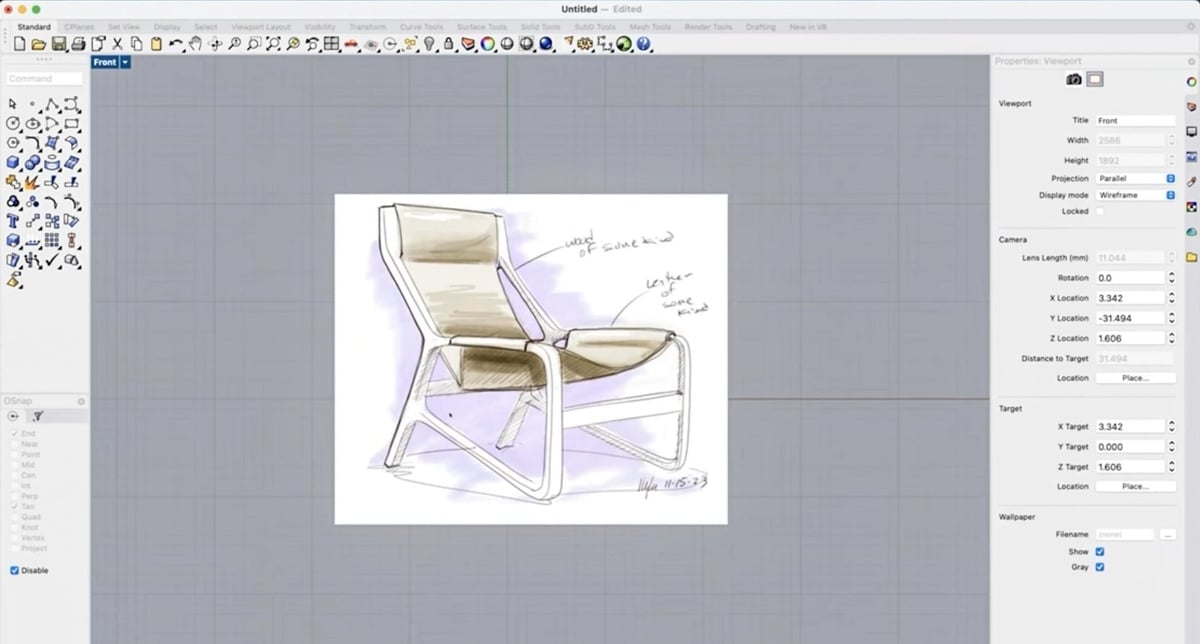
Rhinoceros 3D (v8), is a 3D computer graphics and CAD application from American software maker TLM. It’s widely used for creating, editing, analyzing, and rendering 3D models, particularly in industries such as architecture, industrial design, jewelry design, and automotive design. It’s focus in more on the digital models and concept development than the subsequent manufacturing or building of products. Therefore you won’t find mechanical simulation or toolpath generators in this software, often referred to simply as Rhino. But that doesn’t mean it’s all for show. You can create and edit mesh models for 3D printing and, with some plug-ins we cover below, Rhino becomes a capable CAM and CAE tool.
Rhino offers a wide range of modeling tools for creating both organic and geometric shapes. It supports various modeling techniques, including NURBS (Non-Uniform Rational B-Splines), which are particularly well-suited for creating smooth and precise surfaces.
In addition to its modeling capabilities, Rhino also provides tools for rendering, animation, analysis, and interoperability with other software applications. Its open architecture allows for extensive customization and integration with third-party plugins and scripting languages, further enhancing its capabilities and versatility. For example Grasshopper used within Rhinoceros 3D lets you create complex parametric designs. RhinoCAM is a CAM software plugin developed by MecSoft Corp. specifically for Rhinoceros 3D that provides a range of machining strategies for milling and turning, so you can generate toolpaths directly within the Rhinoceros environment. SimScale is a cloud-based CAE platform that offers simulation capabilities for various engineering disciplines, including structural mechanics, fluid dynamics, and thermal analysis. It supports integration with Rhinoceros 3D through standard file formats such as STEP or IGES, allowing users to import geometry from Rhino for simulation purposes.
Rhino 8 for a single user about $995 for a perpetual license, so forever, with updates and support for the current version. Students and educators can pay as little as $195.
nTop 4
Times are a-changing, and new technologies require new tools. This is what nTop (formerly know as nTopology), a New York-based company, set out to accomplish: to build “the next generation of engineering design tools for advanced manufacturing.”
The software is not a traditional CAD tool in that it’s centered on additive manufacturing technologies and parametric design. It’s been called the founding software of the Design for Additive Manufacturing (DfAM) movement, and engineers use it to design (or redesign) parts to be lighter weight and more efficient than parts made by traditional manufacturing.
And while it’s not meant for day-to-day drawing tasks and documentation, it was developed to operate alongside other CAD and CAE solutions, working seamlessly with all major CAD and mesh formats. It’s is used by engineers in industrial sectors, including aerospace and robotics.
nTop incorporates functionality like generative design, multifunctional optimization, and lightweight part development. CAD programs, like Fusion 360 and others are rapidly trying to incorporate their versions of nTop features for additive manufacturing technologies, but nTop is also growing.
In it’s latest release nTop 4, the company introduced Field Optimization, a multi-scale and multi-objective optimization engine on top of nTop’s core generative design technology, which results in an easy-to-use workflow to generate optimized lattice structures. There’s also a new “Implicit Interop” to make file transfer faster and easier, nTop says, with tools developers can use to integrate with nTop and a brand new file format (.implicit) used to directly exchange implicit geometry without meshing, resulting in smaller file sizes at lossless precision.
In addition to the Windows deployment, nTop 4 introduced nTop Automate for Linux.
SpaceClaim
SpaceClaim is a 3D direct modeling CAD software developed by Ansys (soon to be acquired by chip design software maker Synopsys) stands out in the CAD landscape for its intuitive and flexible approach to 3D modeling, focusing on ease of use and quick iteration in design processes. Ansys says SpaceClaim “is the perfect modeling solution for engineers who want access to 3D answers but don’t have the time or inclination to learn complex traditional CAD systems.”
Unlike traditional parametric modeling software, SpaceClaim employs a direct modeling method, allowing you to manipulate geometry directly without the constraints of history-based operations. This enables more rapid design iteration and makes it particularly suitable for conceptual design, reverse engineering, and quick edits to imported geometry. Ansys says SpaceClaim streamline workflows to reduce model pre-processing time from weeks or days to hours.
SpaceClaim isn’t what you’d use to create detailed manufacturing blueprints for a product, but that’s not it’s goal. This software is more of a creative space that offers robust interoperability capabilities so you can import and export to other CAD software, like Inventor or Creo.
Developer Ansys is a specialist in simulation software, so you can use SpaceClaim to prepare geometry for simulation, perform basic analyses, and make design decisions based on simulation results. This integration enhances the design exploration process, enabling engineers to optimize designs for performance, manufacturability, and cost efficiency, the company says.
SpaceClaim offers specialized tools for sheet metal design, simulation preparation, and 3D printing.
FreeCAD
Although you won’t find many businesses using a free, open-source software, because there’s no dedicated technical support, fewer integrations, and a general perception of being unstable, FreeCAD is popular with freelance product designers, engineers and small businesses.
FreeCAD is free software with tools for CAD as well as simulation, CAM, and motion simulation. It’s primarily used for the mechanical modeling of complex machines.
FreeCAD’s modeling capabilities are spread across various “workbenches”. The Drafting workbench can be used for modeling with 2D sketches and 3D operations, while the TechDraw workbench is for technical blueprints. The Part Design workbench has more complex operations to go from sketch to model.
In the Path workbench is where CAM processing is done.
Although FreeCAD has some rendering tools, the quality isn’t what you’ll find in most commercial software. FreeCAD does, however, have two noteworthy workbenches for more complex functions: the Surface workbench for surface modeling (a surface is an outer skin that represents the shape of the model) and the Points workbench to work with point clouds.
FreeCAD has external workbenches that have been developed by members of the community, enhancing the software’s functionality. They are generally developed independently and stored in GitHub, but FreeCAD’s Wiki offers a list of the most popular ones. Some of these workbenches include workbenches for architecture, assembly, customization of the UI, airplane design, mechatronics, doing finite element analyses (FEA), and electronic design. There are also add-ons that enable the software to support different file types.
Other Options & Specialty Tools
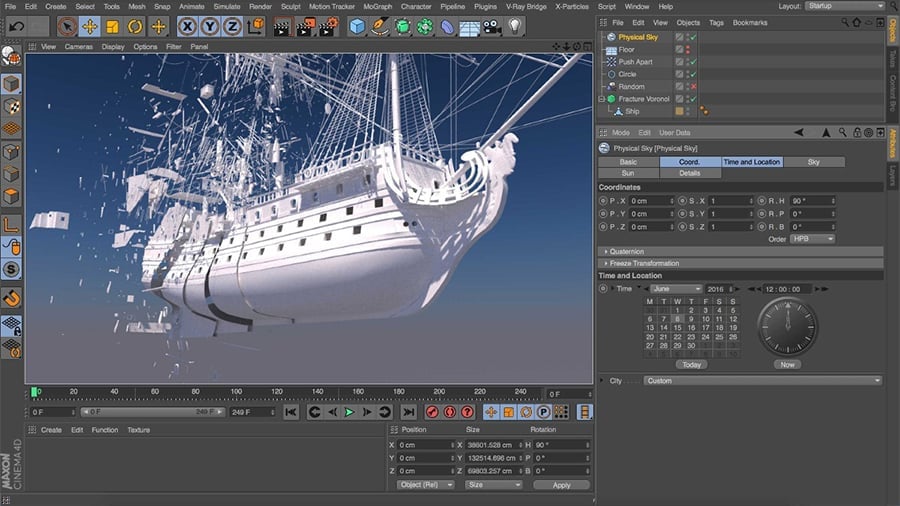
Above are the top all-around CAD tools but there are many focusing on specific industries, like these.
License: The text of "The Best CAD Software in 2024" by All3DP Pro is licensed under a Creative Commons Attribution 4.0 International License.
CERTAIN CONTENT THAT APPEARS ON THIS SITE COMES FROM AMAZON. THIS CONTENT IS PROVIDED ‘AS IS’ AND IS SUBJECT TO CHANGE OR REMOVAL AT ANY TIME.


